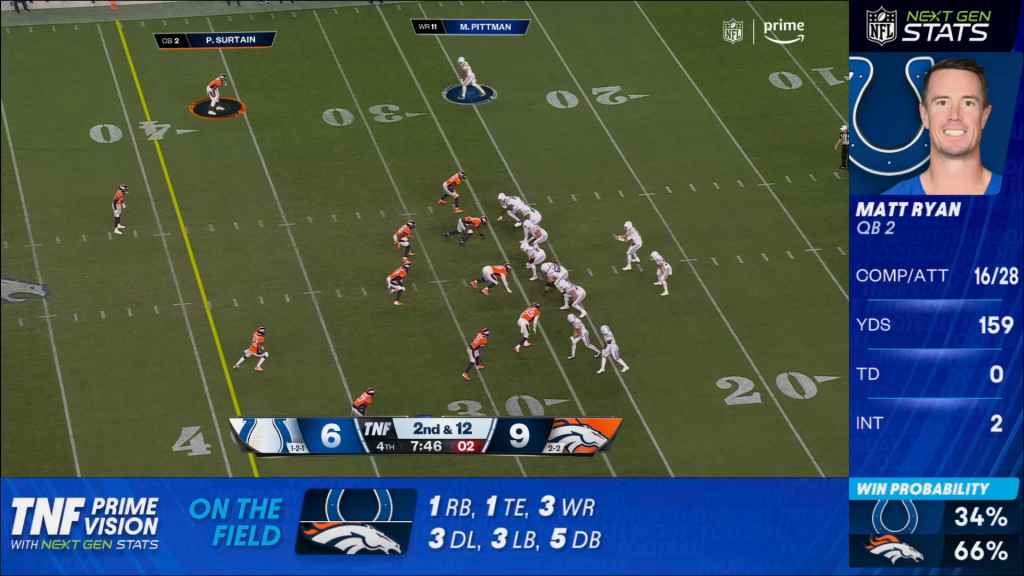
After more than 40 years of operation, DTVE is closing its doors and our website will no longer be updated daily. Thank you for all of your support.
AWS partners with NFL to launch Expected Return Yards
AWS machine learning (ML) engineers have partnered with the NFL’s Next Gen Stats group to create Expected Return Yards, the first-ever set of advanced stat models focused on providing detailed insight into plays within the games.
The two companies have been working together over the last five years to design a framework to tackle never-seen-before stats, that delivers analytics of offensive and defensive plays in the game.
Expected Return Yards predicts how many yards the returner is expected to gain once they receive the ball based on the speed, acceleration, and orientation direction of every player on the field at that timestamp which is gathered from player tracking data sent from chips in players’ pads. From that timestamp, the model makes an estimate of the probability distribution of how many yards that player would gain if they were to return the punt or kickoff
“This is all part of a larger effort to help fans experience and understand every aspect of the game as it happens,” says Mike Band of NFL Next Gen Stats. “If we can tell stories about each component within the game, it allows us to tell whatever story is transpiring on the field. Not just for the sake of it, but to bring the fans closer to closer to the sideline.”
Q&A with Josh Helmrich, NFL Director of Strategy and Business Development:
Is there a plan to present this functionality on multiple screens including TV?
Yes. Next Gen Stats (NGS) provide value and insight across the entire ecosystem of the NFL. We want to make sure that fans can access our content everywhere that they are consuming NFL football – including on TV. Specifically for TV, the data has proven to be a valuable asset for our broadcast partners to storytell during their productions. Working with our tracking data and in collaboration with AWS, we’ve been able to identify key data points from the game that allow our fans to better understand the action on the field. Broadcasters incorporate this NGS data in a variety of ways, including in graphics or video replay packages, as well as the on-air talent using it in their analysis of the game. We provide NGS data to fans in several other ways, including via our digital platforms such as Nextgenstats.NFL.com and our social channels. Our NFL Clubs also incorporate the information as part of their in-stadium experience on their videoboards.
If so, what are the challenges in delivering a TV-friendly version of this and delivering it across multiple operating systems?
A TV broadcast of an NFL game is very fast-paced, and so it is important that we deliver content that is available in real-time, and easily digestible for fans at home. To do this, it is key for us to work closely with our broadcast partners and to help them understand what the content is, and how it can best be utilized on-air. Leading up to a broadcast, our team develops research packets and is in contact with production staff to deliver valuable statistics to help them prepare for the game and know what to expect. Then in-game, our research team is in constant communication with the production folks to help identify interesting data points, which can help fans better understand what is happening on the field.
What is the timeline for rolling out the technology and what partners are involved in delivering it to consumer platforms?
NGS has been available for several years, but every year we continue to evolve the platform and deliver new and engaging statistics for fans. For a new data point, the length of development is dependent on the complexity of calculation of that statistic. To that point, we work with AWS to allow us to leverage their immense resources and to deliver stats that we would never be able to deliver ourselves. Specifically, their machine learning resources have been essential in calculating things like Completion Probability, Expected Rushing Yards, and our newest stat: Expected Return Yards. As technology gets better and fans get smarter, there’s a desire to grow and enhance our ability to explain and quantify the action on the field. AWS is helping us to do that better than ever before.




